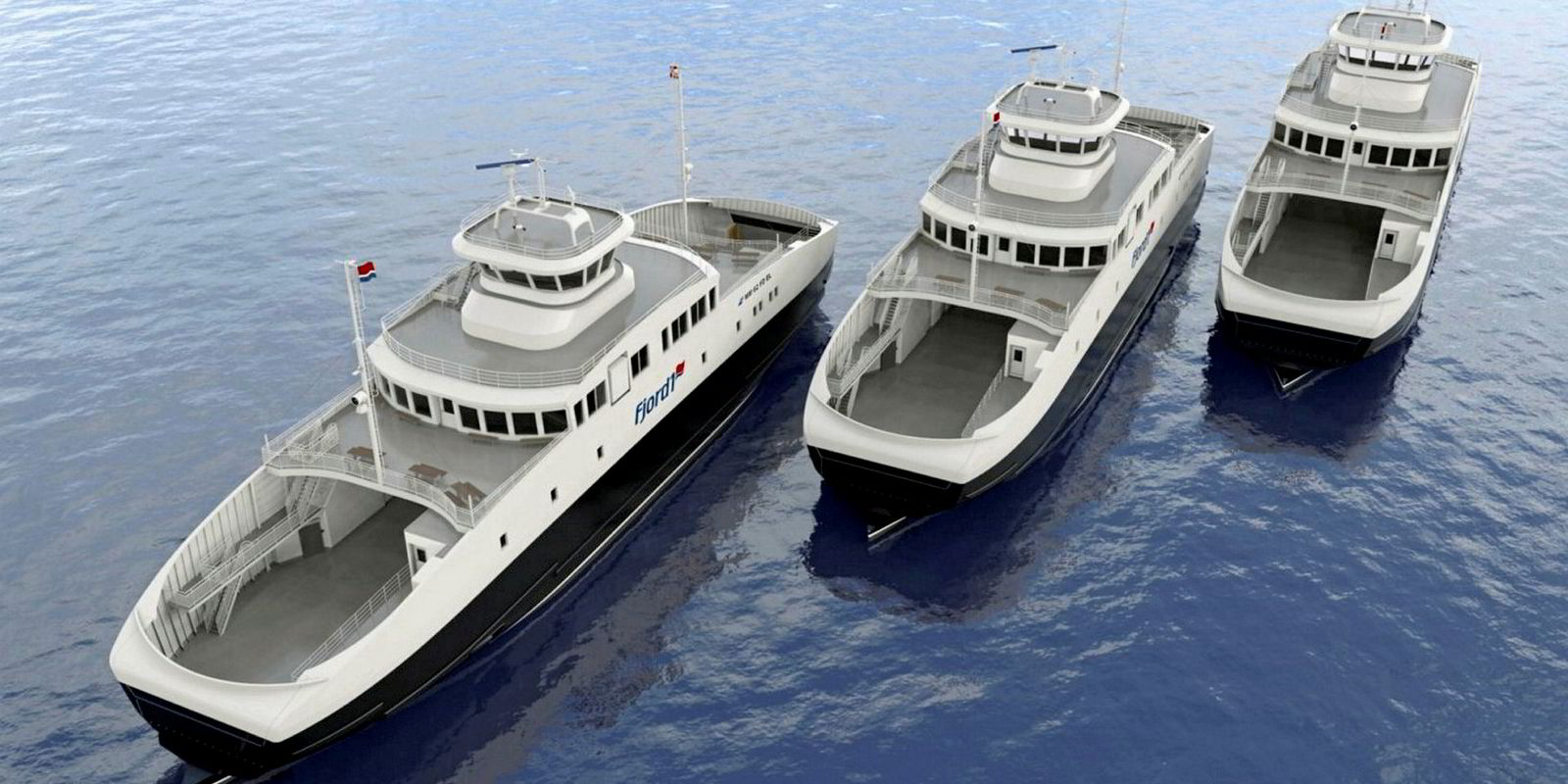Rolls-Royce Marine has taken the first in a four-step strategy to realising unmanned ships.
The Fjord1 ferry project to operate a battery-powered, double-ended ferry for the crossing between Norway’s Anda and Lote using an automatic system is ready to go into service next year.
The ship will be crewed, but only the final berthing operations will be handled by the ship’s master with all other operations being fully automatic.
The automation is necessary because using battery power requires consistency of operation so energy consumption can be predicted.
Rolls-Royce Marine director of engineering and technology Kevin Daffey believes that using automated systems on crewed ships will be an important first step in paving the way towards full automation.
“Ferries are a good starting point,” he said. “Operating the vessel with people on board will help build up confidence.”
Daffey hopes that the automated crossing system will be extended to an automated docking system by next year and for it to be expanded into inland waterway and coastal trades in stage two of the strategy.
He says that the sensor and situational-awareness technology is already in place that will make the first unmanned coastal vessel ready by 2025.
However, the problem of regulation hangs over progress into the ocean-going trades.
While national exemptions for manning levels could be achieved in the ferry and coastal business, it is likely to prove problematic for the international trades by Rolls-Royce’s 2030 target date.
The two regulatory hurdles that would have to be overcome include collision regulations (Colregs) and minimum manning levels.
Colregs are already being programmed into Rolls-Royce Marine’s automated systems, Daffey says, along with the codification of various navigational scenarios. This might be enough to make the vessels compliant.
Rolls-Royce Marine is also working with various flag states, such as Singapore, on automation, as well as classification societies, which should help win strong governmental support for automated systems at the International Maritime Organization (IMO).
Daffey thinks that automated ships can contribute to the IMO’s goals to reduce carbon emissions and, as a result of the relevant changes in regulation, could be fast-tracked through.
“It is one way the industry could address the decline in emissions and could be a big step toward decarbonisation,” he said.
“The IMO’s greenhouse-gas reduction road map and our own autonomous-vessel road map are aligned. We estimate that with the removal of the wheelhouse and lifesaving apparatus, fuel efficiencies of around 20% can be achieved. That will remove millions of tons of CO2 from the atmosphere.”



